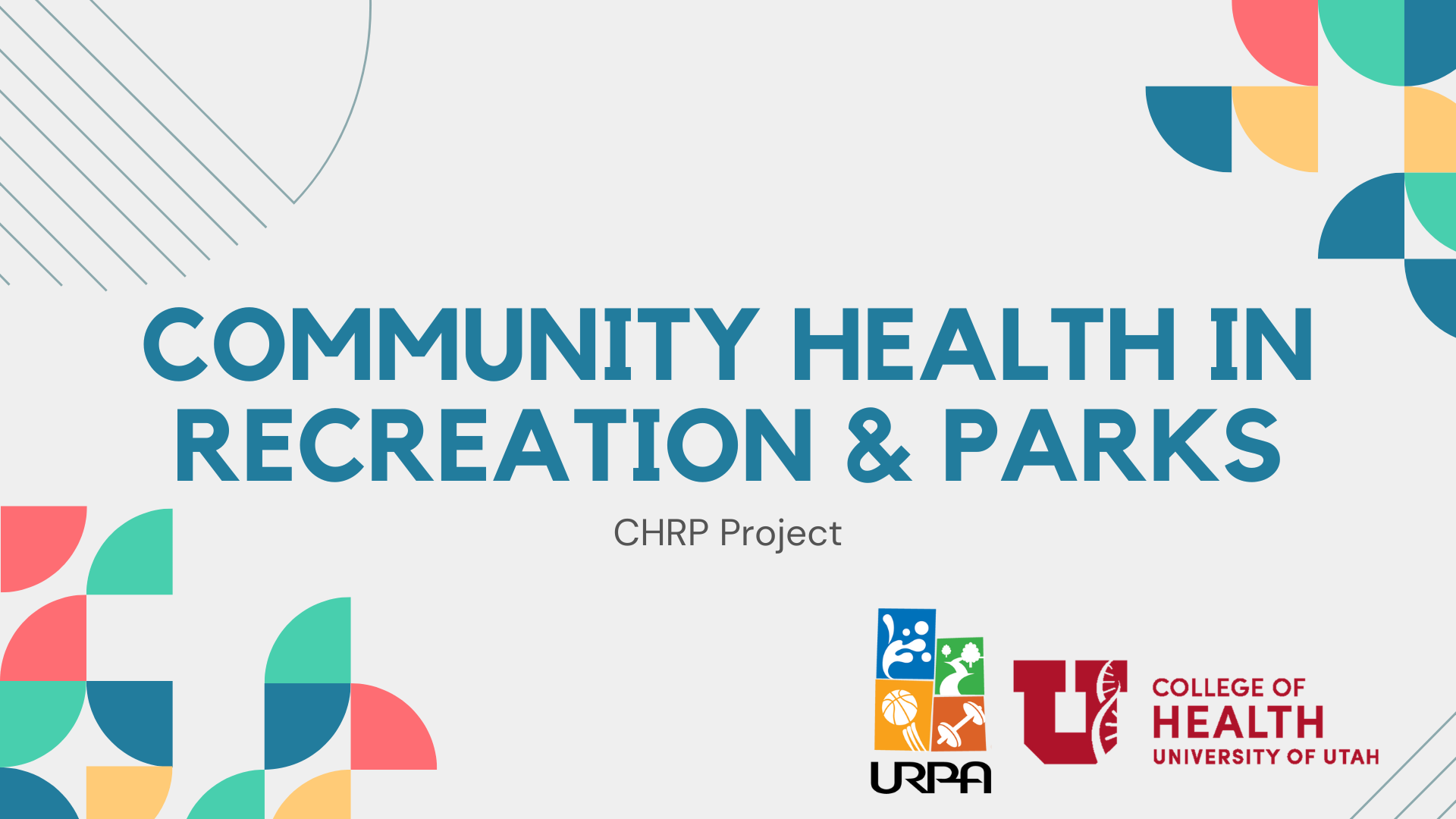
Telling the Story Community Health in Recreation & Parks
Parks and recreation services are essential for promoting health and wellness in our communities. This is backed by research evidence, which shows that physical activity, youth sports, park access, and outdoor recreation are linked to improved individual and community health outcomes. Research even suggests that these benefits can reduce healthcare costs and contribute to the economic health of communities. Yet we often struggle to get the resources we need to do great programming and maintain our facilities at a high level. How can we make sure that decision-makers in our community see the true value of the work we do?
A collaborative research project between the University of Utah and the Utah Recreation and Parks Association sought to answer this question. This project, titled Community Health in Recreation and Parks, found that in Utah, parks and recreation professionals understand the value of the services they provide. This work showed that when given the opportunity, many of us discuss how parks and recreation builds social connections, improves resilience, creates opportunities for people to pursue health and wellness, and improves quality of life in our communities.
However, findings also showed that parks and recreation professionals often feel unequipped to communicate these benefits to decision-makers in our community, including elected officials and local administration. Part of the challenge is that many parks and recreation professionals do not have access to research evidence on the benefits of parks and recreation. Additionally, as public servants, we often face pressure to report on the tangible aspects of our work, such as the number of participants we serve and the amount of money generated from our programs. This often leaves us without the time and space we need to communicate how impactful our programs are for individual and community wellness.
Here's the good news! To help address these challenges, the research team created a suite of resources to help professionals in our field communicate about the health and wellness benefits of the work we do. These resources and their potential uses are outlined below. We encourage you to use these resources, and to share them with others who may find them useful. We hope that these tools will promote ongoing investment in parks and recreation by helping you tell the story of these essential services.
| Resource | Purpose | Potential Uses | Files | |
|---|---|---|---|---|
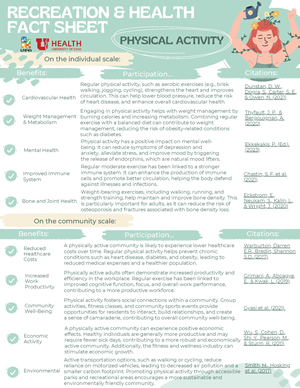 |
Fact sheets on Health Benefits of Parks and Recreation | To summarize existing research evidence on connections between parks and recreation services and health outcomes. |
|
Physical Activity Outdoor Recreation Social Return on Investment Senior Social Connection Youth Sport Community Benefit Youth Sport Individual Benefit |
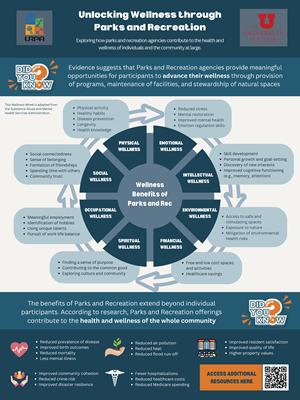 |
Wellness Wheel Poster | To provide a framework for understanding how parks and recreation services can support the 8 dimensions of wellness: physical, social, emotional, intellectual, environmental, financial, spiritual, occupational. |
|
Wellness Wheel Poster Poster Supplemental Information |
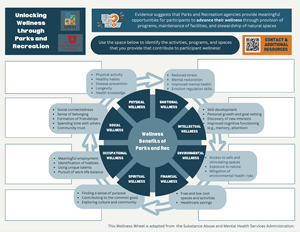 |
Wellness Wheel Worksheet | To help parks and recreation professionals identify how the activities, programs, and spaces that their agency provides contribute to the 8 dimensions of wellness. |
|
Wellness Wheel Worksheet |
.jpg)
.jpg)
|
Customizable Slide Decks on the Health Benefits of Parks and Recreation |
To make it easier for parks and recreation professionals to communicate about the health benefits of parks and recreation. These slide decks summarize existing research evidence, provide estimates of the economic benefits of investing in parks and recreation, and offer customizable slides where practitioners can summarize how their agency is promoting health and wellness in their community. |
|
Colorful Slide Deck Simple Slide Deck |
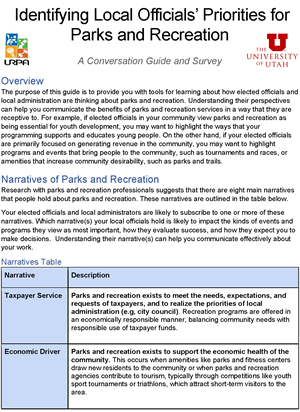 |
Guide: Identifying Local Officials' Priorities for Parks and Recreation | To help parks and recreation professionals learn about how elected officials and local administration are thinking about parks and recreation. |
|
Guide: Identifying Local Officials' Priorities for Parks and Recreation. |